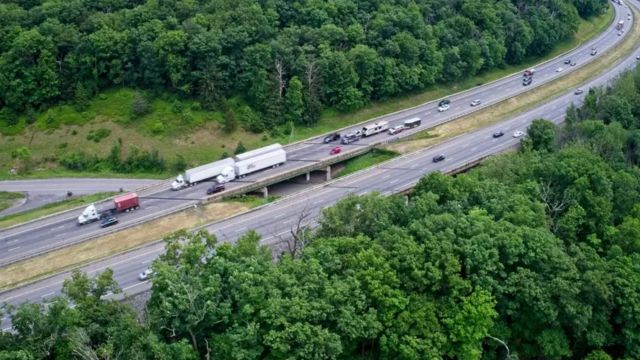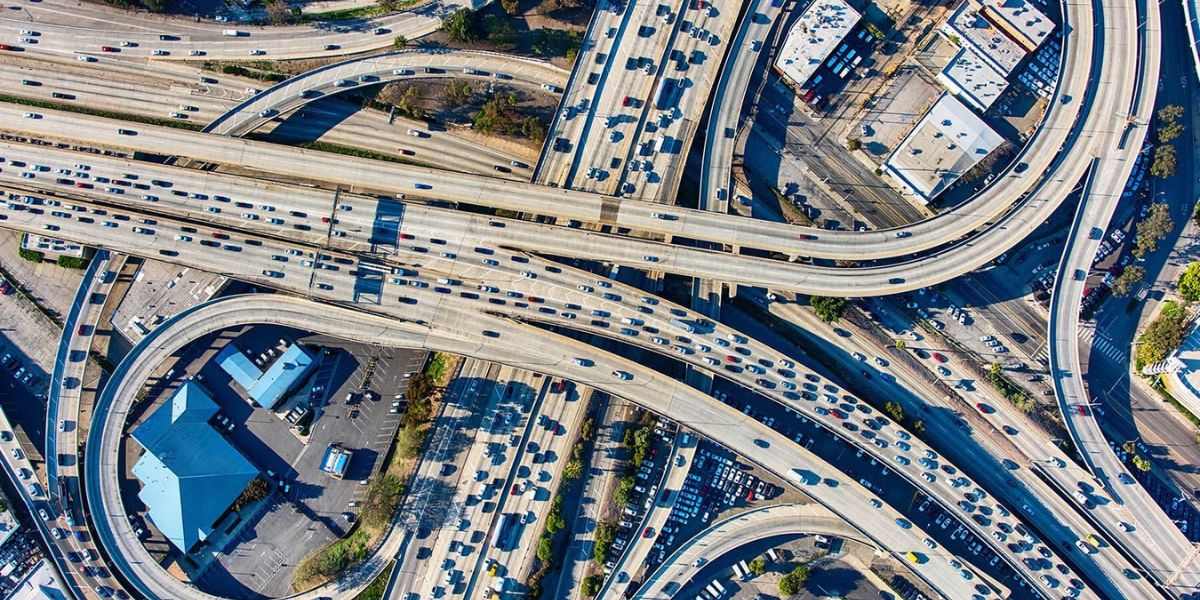WFCN –
Highway travel in New York is notoriously difficult, particularly on routes with a history of accidents and other dangerous circumstances. To ensure your safety, it is vital to recognize these hazardous roadways, whether you are a local commuter or visiting the state.
New York drivers should exercise extreme caution on the following five highways, and here are some important safety advice to help you traverse them:
The Adirondack Northway, often known as Interstate 87 (I-87)
Stretches from the Atlantic Ocean in the north to the Canadian border in the south.
Cons: During holidays and other high-traffic seasons, the Adirondack Northway experiences exceptionally heavy traffic. Dangers encompass:
- Heavy Traffic: When roads are congested, drivers may have to brake suddenly, which can cause backups.
- Precipitation: In the winter, snow and ice can make the roads very dangerously slick.
- Work Zones: Reduced speeds and lane closures may be necessary due to ongoing construction projects.
Important Safety Reminders:
- Think Forward: Get a feel for the road conditions and weather predictions before you set out.
- Give yourself enough of room to stop suddenly by keeping a safe following distance from the car ahead of you.
- Adapt to the Weather: To stay in control of your car, modify your driving pace and technique according to the weather.
I-95, the New England Thruway
Place: Linking the Big Apple with the states of New England.
Dangers: Interstate 95 passes through heavily populated regions, including large cities such as Stamford and New York City. Dangers encompass:
Heavy Traffic: Especially in and around large cities, traffic jams are commonplace.
There are a lot of exits and interchanges, so you have to be careful when you’re navigating them.
Accidents can occur when drivers make abrupt changes in lanes or merge lanes.
Important Safety Reminders:

- Be Vigilant: Keep an eye out for signs and lane markers, especially near busy intersections.
- When changing lanes, make sure to check your mirrors and use your signals to let other drivers know what you intend.
- To avoid accidents, keep an eye on the speed limit and adapt your driving style to the current traffic conditions.
Thomas E. Dewey, Governor of New Jersey, and Interstate 87 State Route
Spread all across the Empire State, it links the Big Apple to Albany and beyond.
SEE MORE –
Upcoming: These Are the 5 Transportation and Traffic Laws in California? Check Here!
Dangers: As a major thoroughfare, the Governor Thomas E. Dewey Thruway presents a number of risks:
Drivers may get tired from traveling lengthy distances between service stations.
Changes in the Weather: Visibility and road conditions can be greatly affected by changes in the weather as you travel along the route.
Heavy truck traffic can affect the ability to change lanes and the overall flow of traffic.
Important Safety Reminders:
- During lengthy travels, stop at designated rest places to relax and rejuvenate.
- Keep an eye on the forecast so you can change your speed accordingly.
- Drive Together: When merging or passing, be careful of trucks and other big cars; they need extra room.
The 84th parallel (I-84)
It connects Pennsylvania and Connecticut and runs east-west across southern New York.
Threats: I-84 travels through both urban and hilly regions, which pose unique obstacles:
Careful braking and acceleration may be necessary on mountainous sections due to the steep grades.
Drivers must be prepared to adapt to variable speed limitations, as these limits may vary in different parts.
Reduced lanes and speed limits may be in effect in construction zones due to ongoing road maintenance and development.
Important Safety Reminders:
- Downhill slopes require extra caution while braking; lower gears and engine brakes might help you keep control.
- Never Exceed Posted Speed Limits: This is particularly true in areas where construction is taking place.
- Maintain Concentration: Keep yourself free of interruptions and keep an eye out for any changes in road conditions.
Staten Island Expressway – Interstate 278 (I-278)
Place: This New York City bridge links Staten Island to the boroughs of Brooklyn and Queens.
Dangers: As an important commuting route, the Staten Island Expressway presents its own set of problems:
Congestion: Delays and annoyance can result from traffic during peak commuting hours.
Be careful on winding roads with narrow lanes and those that need you to change lanes often.
When the weather is bad, crossing a bridge can be an intimidating prospect.
Important Safety Reminders:
- To minimize the dangers associated with congestion, plan your travel times such that you avoid peak traffic hours wherever possible.
- Use the Allotted Lanes: To keep traffic moving, stay in your allotted lane and don’t make any abrupt lane changes.
- Exercise Extreme Caution in Fog While driving in bad weather, it’s important to reduce speed and increase following distance.
Conclusion
You may reduce your exposure to danger and have a more secure drive if you study up on these New York highways and follow safety advice.
Driving defensively and maintaining vigilance are crucial for your own and other people’s safety on the road, regardless of whether you’re dealing with severe traffic, bad weather, or complicated interchanges. Stay informed, stay safe, and make responsible choices to navigate New York’s highways with confidence.
